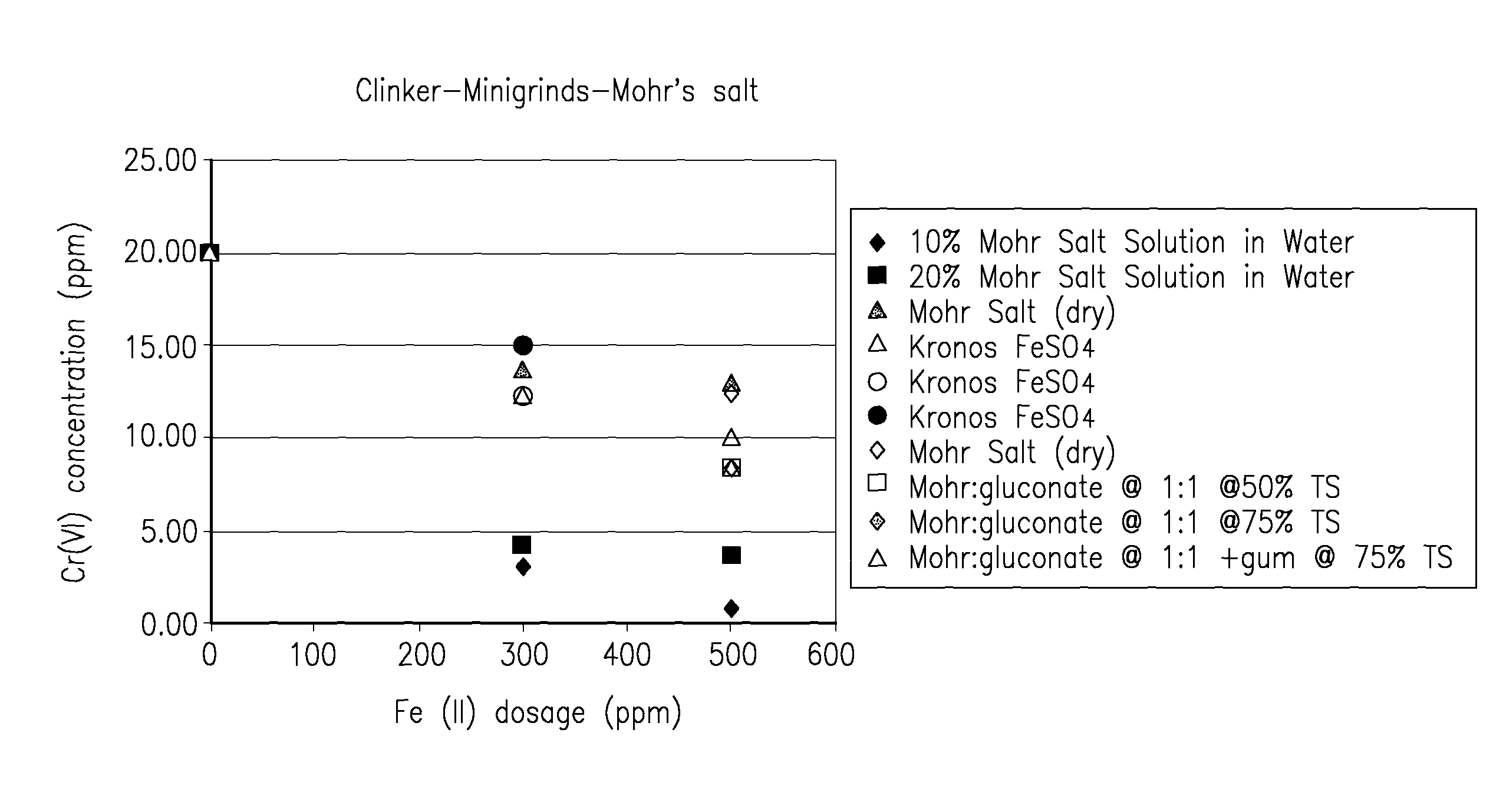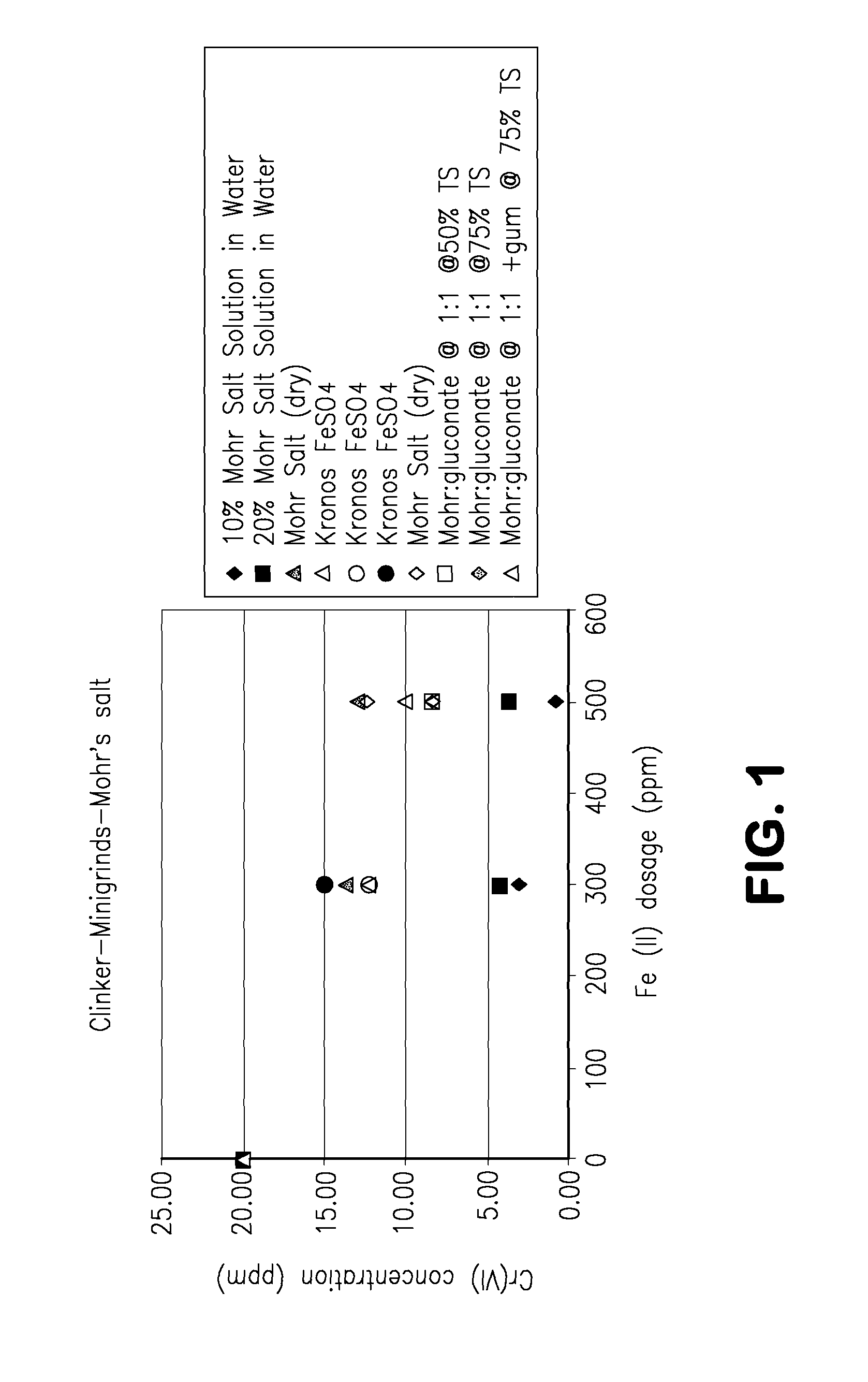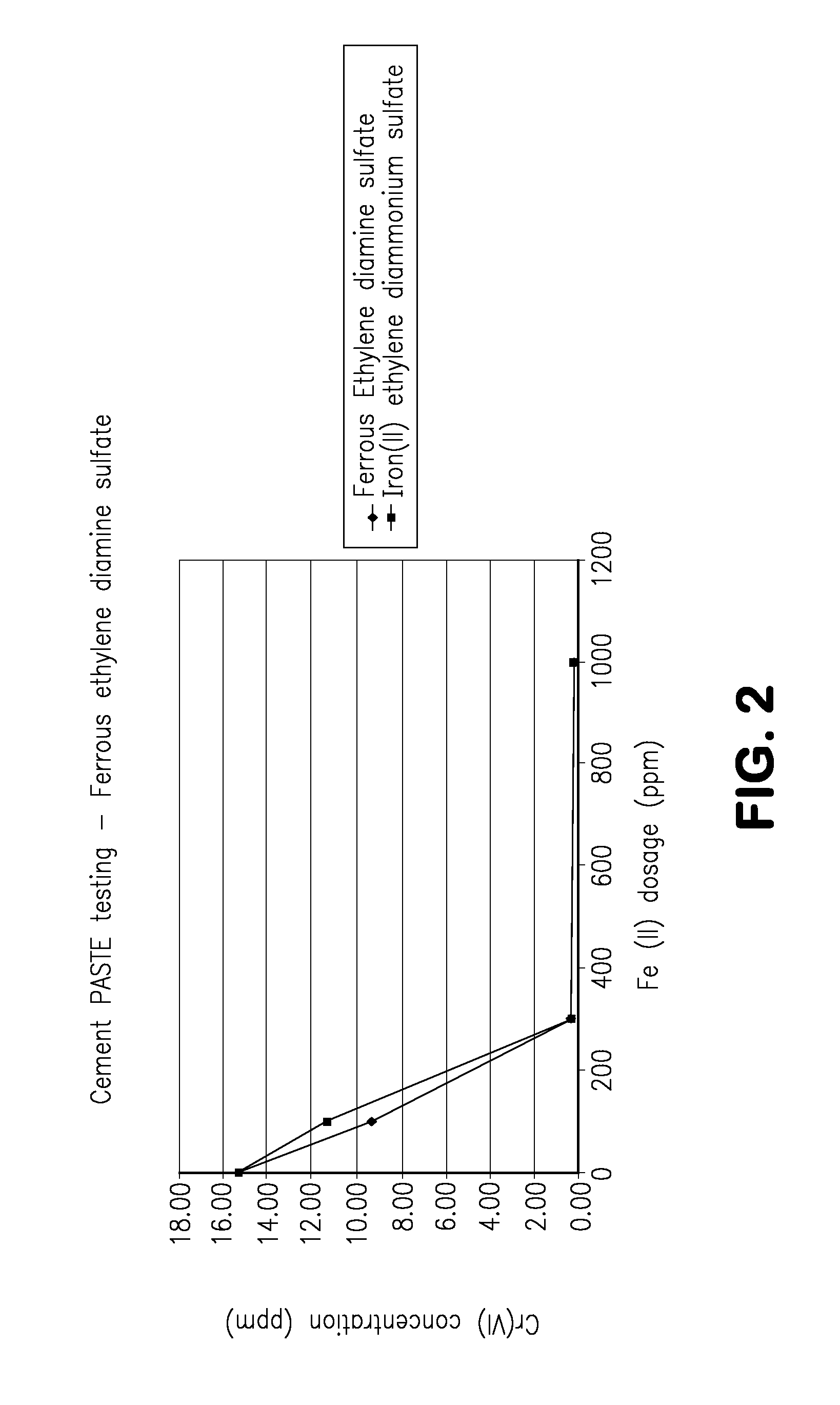Coordinated metal compounds for reducing chromium
a metal compound and chromium technology, applied in the direction of hydrocarbon from oxygen organic compounds, etc., can solve the problems of chromium being considered extremely toxic, chromium being an unavoidable trace element, allergic reactions, etc., to reduce the level of hexavalent chromium (vi), reduce the loss of efficiency, and stabilize the metal cation
- Summary
- Abstract
- Description
- Claims
- Application Information
AI Technical Summary
Benefits of technology
Problems solved by technology
Method used
Image
Examples
example 1
[0061]FIG. 1 shows results of cement clinker in which Mohr's salt in various forms (solid or in water solution) was added in comparison to ferrous sulfate. The Mohr salt additions were more effective than ferrous sulfate in reducing chromate in the resultant ground cement, especially when used in solution form. Dilute solutions are better than concentrated solutions, perhaps due to better dispersion. However, dilute solutions could result in caking due to excess water. It was found that adding sodium gluconate to the Mohr's salt at a 1:1 by mass addition rate facilitated a higher loading of the Mohr's salt at 50 to 75% solids levels, and this eliminated caking. Performance in the ball mill was better than the dry Mohr's salt. It was confirmed in all cases that the addition of a Mohr's salt solution was favorable when compared to adding powder for grinding operations.
example 2
[0062]One major problem with Mohr's salt is the release of ammonia when water is added to the cement. This was quite noticeable in concrete, where 8 parts per million of ammonia was detected. In addition, the setting of the cement was retarded by more than two hours. Such disadvantages are believed to present significant hurdles in the industry. When the present inventors replaced the ammonia groups with the amine groups, e.g., substituting ethylenediamine ferrous sulfate tetrahydrate for ethylene diammonium ferrous sulfate, chromate levels were reduced in cement but ammonia gas was not produced. Initial results in paste mixes are presented in FIG. 2.
example 3
[0063]Test results take from blended cements in which Mohr's salt, ethylene diamine salts, and ferrous sulfates were compared, are presented in FIG. 3. The performance enhancement with the ethylene diamine ferrous sulfate was equivalent to Mohr's salt without the ammonia odor, and both significantly outperformed the standard FeSO4*7H2O.
PUM
| Property | Measurement | Unit |
|---|---|---|
| molecular structure | aaaaa | aaaaa |
| weight | aaaaa | aaaaa |
| composition | aaaaa | aaaaa |
Abstract
Description
Claims
Application Information
 Login to View More
Login to View More - R&D
- Intellectual Property
- Life Sciences
- Materials
- Tech Scout
- Unparalleled Data Quality
- Higher Quality Content
- 60% Fewer Hallucinations
Browse by: Latest US Patents, China's latest patents, Technical Efficacy Thesaurus, Application Domain, Technology Topic, Popular Technical Reports.
© 2025 PatSnap. All rights reserved.Legal|Privacy policy|Modern Slavery Act Transparency Statement|Sitemap|About US| Contact US: help@patsnap.com



